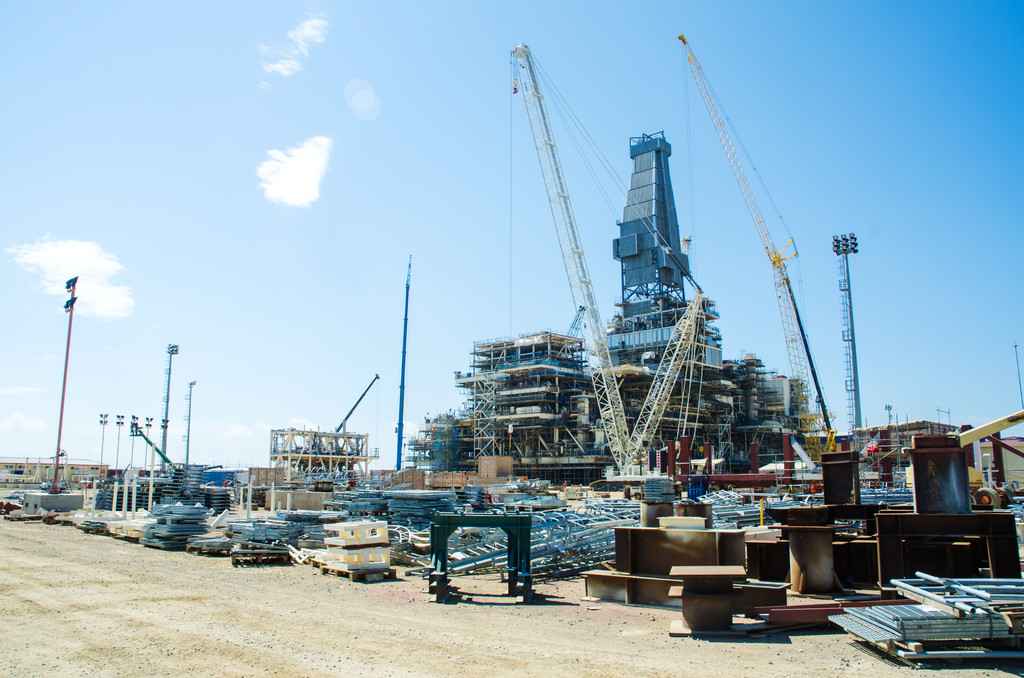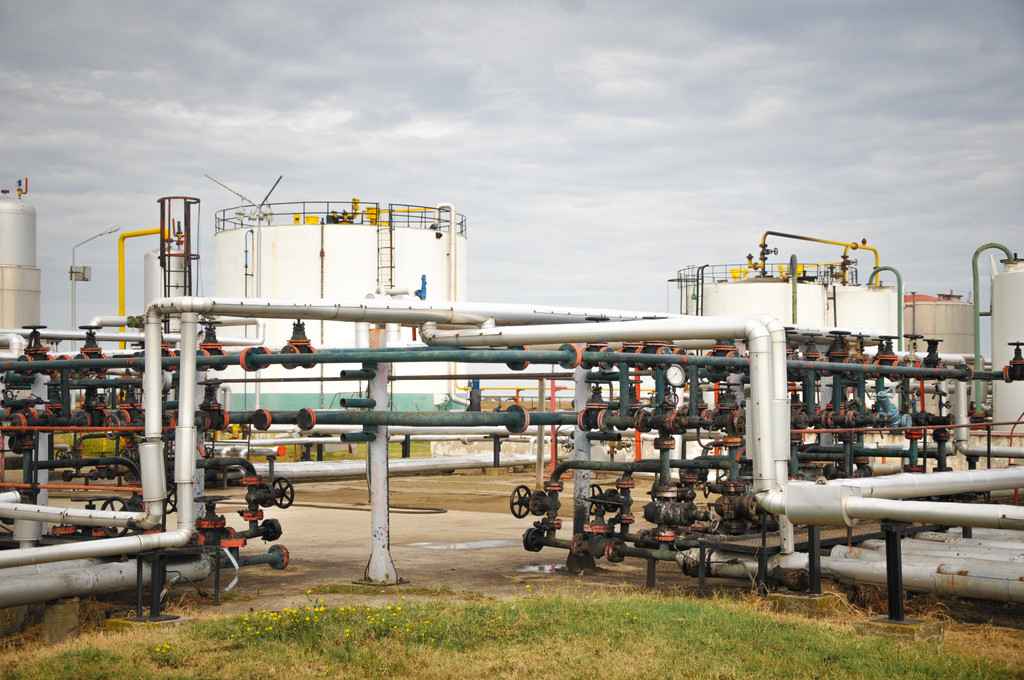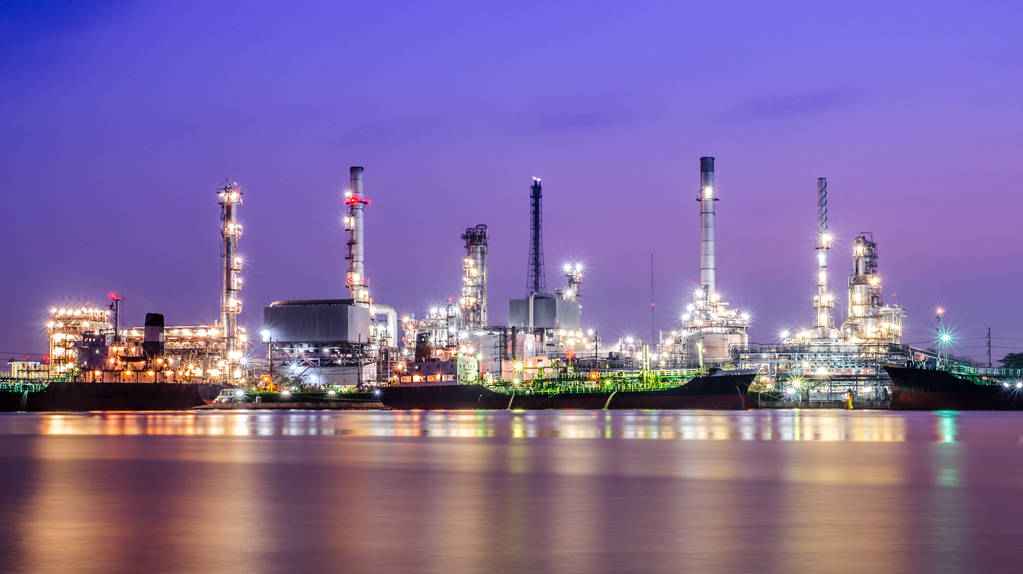The oil and gas (O&G) industry is one of the biggest industries in the energy market. The O&G industry is generally categorized into three segments—namely, “upstream,” “midstream,” and “downstream” based on the operation stage in the supply chain.
While “upstream” extract oil and natural gas from the ground, “midstream” moves them safely, and “downstream” provides fuel oils and finished petroleum products.
Oil and natural gas producers make natural resources like oil and natural gas accessible and usable for heating buildings, propelling vehicles, producing electricity, providing industrial feedstock, and much more.
Furthermore, the O&G industry is among the largest sectors in terms of dollar value. Capital-intensive and complex processes drive the day-to-day operations of oil and gas companies that are highly regulated at multiple levels to ensure regulatory and safety compliance.
Many large oil companies act as “integrated” companies that combine the three stages, i.e., upstream operations with midstream and downstream operations.
Keep reading to learn more about the oil and gas segments in detail.
What is Upstream Oil and Gas?
The upstream sector includes exploration, drilling, and production of crude oil and natural gas.
Upstream success relies on extensive seismic, logging, and drilling technologies.
The upstream segment presents new business and project opportunities for oil service firms that provide services such as geological surveying, drilling, fluid hauling, and non-destructive testing.
An upstream company uses a variety of oil and gas equipment, including drilling rig equipment (bits, mud pumps, etc.) and production equipment (control valves, heater treaters, free water knockouts (FWKOs), separators, etc.).
The upstream activity tasks focus on holistic well management (locating, designing, constructing, operating, and managing) to deliver the maximum ROI (return on investment) with minimum operational footprint.
Exploration and production (E&P) constitute the upstream processes of locating and extracting crude oil and natural gas reserves.
The core stages of E&P include:
Exploration
Exploration involves obtaining mineral rights and land leases from the owners of onshore or offshore acreage. Exploration covers onshore and offshore oil and natural gas fields.
The stage also includes geological and geophysical surveys (G&G surveys) for underground/underwater oil and natural gas reserves (accumulations of hydrocarbons).
Exploration is broadly divided into the following steps:
Initial interest
The decision to drill an exploratory well stems from an initial interest in exploring petroleum deposits in a particular area.
Leasing
Rather than purchasing mineral rights, a mineral lease (to explore for and extract oil and gas) is obtained from a mineral owner for further exploration.
Wildcat drilling is high-risk exploratory drilling performed in unproven or fully exploited oil and gas fields.
Geophysical survey
After initial exploration and lease acquisition, a geophysical survey studies the substructures of the Earth to find oil and gas deposits.
The exploration department of an E&P project leverages the expertise of geophysicists and geologists.
A geophysicist uses surface methods to detect the presence, position, and concentration of hydrocarbons.
On the contrary, a geologist applies scientific methods to assess the geologic factors that affect the location, design, and construction of exploratory wells.
Drilling
Drilling is physically creating a borewell in the ground. Rig contractors and service companies generally undertake the drilling operations for locating oil and gas reservoirs. Transocean and ENSCO are two of the largest rig contractors.
The Baker Hughes rig count indicates all the rigs presently active throughout the United States and Canada. An increased rig count is an estimated marker of enhanced oil production.
Usually, E&P companies hire oilfield service companies (OSCs) to drill wells and maintain wells via various activities, such as logging, cementing, perforating, and maintenance.
A horizontal well is preferred if excavation is not possible or the shape of the reservoir is difficult to access. A horizontal well helps in accessing hard-to-reach subsurface reservoirs, draining a wide area, and improving the productivity of a fractured reservoir.
The horizontal drilling method involves drilling a well along a horizontal path at a well inclination of approximately 85° to 90° from a vertical direction.
Onshore drilling
Plentiful land resources provide greater production results. Onshore drilling is flexible, mobile, and cost-effective compared to offshore drilling.
It may take a few months to years to set up a drilling facility in the middle of the ocean. However, onshore drilling makes it easier to move equipment from one site to another and incurs lower shipping and installation costs.
Offshore drilling
Currently, onshore sites contribute around 70 per cent of the world’s oil and gas, with 30 per cent produced offshore.
Some of the world’s biggest offshore drilling companies include Schlumberger, Halliburton, Baker Hughes, Petrofac, Weatherford, Saipem, and China Oilfield Services Limited (COSL).
Extraction
Extraction involves recovering and processing oil and gas to remove sand, water, and other impurities. Produced water (PW) is the largest volume of wastewater generated during oil and gas recovery operations.
During this phase of hydrocarbon production, hydrocarbons are drained from an oil or gas field using the recovery methods of pressure maintenance or waterflooding. The production stage maximizes the recovery of petroleum from subsurface reservoirs.
Production activities involve primary oil recovery, secondary oil recovery, and tertiary or enhanced oil recovery.
See here to explore the seven steps of oil and natural gas extraction in detail.
After a few years, an oil well is sealed and the land restored to its original condition. Site abandonment marks plugging a well or wells and restoring the site when a production well is no longer economically viable or lacks the potential to produce economic quantities of oil or gas.
Some well-known EP companies include Saudi Aramco (Saudi Arabian Oil Company), Chevron, Shell, ExxonMobil, BP, Equinor ASA, PJSC Gazprom, and Sinopec (China Petroleum & Chemical Corporation).
Leading Oil & Gas Producers Across the World
North America
The U.S. is a notable oil producer, with most of the oil production coming from Texas, New Mexico, North Dakota, Alaska, and Colorado. Four of the country’s largest oil refineries are located along the Texas Gulf Coast.
Middle East
In the Middle East, the biggest oil producers are Saudi Arabia, Iraq, the United Arab Emirates (UAE), Iran, and Kuwait.
Europe
The leading oil-producing countries in Europe are Russia, Norway, the United Kingdom, Italy, and Denmark. Most oil companies have investments in the North Sea, which contains most of Europe’s oil reserves.
While substantial reserves lie beneath the British and Norwegian waters, some oil fields belong to Germany, Denmark, and the Netherlands.
Asia
Top Asian countries in crude oil production include China, Indonesia, India, and Malaysia.
Globally, nationally owned and privately owned oil and natural gas production companies have been involved in a wide array of upstream and midstream petroleum projects.
Public sector participation and private equity investments are leading the way forward in the oil and gas industry’s growth.
The complex nature of the industry necessitates specific communication and legal frameworks.
Usually, a public company’s (such as a publicly traded oil company) investor relations (IR) division controls the information flow between the company and its investors and stakeholders.
Furthermore, upstream oil and gas agreements define the business, legal, and working relationships between oil and gas E&P companies and the government agencies (or private parties) that own the mineral rights.
Last but not least, the project economics in the oil and gas upstream industry can evaluate the oil and gas E&P value within a specific contract period. The net cash flow (NCF) or cash balance is used to measure the project’s economic value.
In short, Net Cash Flow = Cash Inflow – Cash Outflow.
Cash inflow refers to the revenue/income generated from oil and/or gas sales during the production period.
Cash outflow refers to the spending/outcome from all expenditures—from acquisition (contract signing phase) to abandonment (contract expiry phase).
What is Midstream Oil and Gas?
The midstream oil and gas operations include processing, storage, and transportation of crude oil, natural gas, and natural gas liquids (NGLs).
The midstream operations also consist of treating the products (for waste removal) and compressing gas before being transported to the markets downstream.
Midstream facilities include pipelines (pipeline transportation), gas gathering systems or transmission facilities, gas processing plants, and LNG facilities.
Furthermore, the midstream sector consists of vital infrastructures, such as pumping stations, rail tank cars, trucking fleets, and transcontinental tankers.
Transporting raw crude oil from production sites (oil fields) to refineries makes it accessible for transforming the crude oil into usable products ready for consumption.
A ship carrying oil in bulk is called an “oil tanker” whose carrying capacity is measured in deadweight tons (DWT).
The midstream processes natural gas, natural gas liquids (NGLs), and sulfur. As a key component of the midstream activities, fractionation plants are responsible for removing NGLs from the produced oil and gas stream and fractionating processed liquids into various products (butane, ethane, propane, and LPG).
Some midstream operations demonstrate functions related to upstream and downstream sectors. For example, the midstream sector may have natural gas processing plants to purify raw natural gas, remove elemental sulfur, and produce natural gas liquids (finished end products).
Companies engaged in oil and gas operations may need access to midstream assets. Some independent midstream companies provide services to access midstream assets, such as fluid compressors, fractionating and dehydration tanks, gas storage facilities, LPG (liquefied petroleum gas) and LNG (liquefied natural gas) storage plants, oil pipelines, etc.
In the United States, oil and gas movement via interstate pipelines is regulated by some policies.
An organization such as the Federal Energy Regulatory Commission (FERC) helps strengthen the regulatory environment by formulating policies in the midstream phase of the oil and gas industry.
A midstream company’s main processes consist of:
Field Processing
Oil extracted from an oil field is available as a mixture of oil, natural gas, and natural gas liquids that flow into a gas-oil separation unit.
After the unit separates water and oil from the natural gas mixture, water is recycled or pumped into a disposal well. However, oil, natural gas, and natural gas liquids flow to the respective storage units.
With the lowest CO2 emissions of any fossil fuel, natural gas is a flexible energy source that can displace carbon-intensive coal and play an essential role in the energy transition.
Storage
Storage plays a pivotal role in maintaining a balance in the supply and demand of oil in the international market.
Midstream storage terminals not only store primary, intermediary, and end products but also ensure a continuous feedstock supply to chemical plants.
Magellan Midstream Partners, Royal Vopak, TechnipFMC, and Vitol are some of the leading vendors in the global oil and gas storage market.
Transportation
A significant midstream operation is transporting gas or liquids through pipelines. Generally, pipeline operations include pipeline systems operation and control, as well as field operation and maintenance.
Initially, crude oil, gas, and natural gas liquids are transported from the production field to an offsite temporary storage facility and later to a large storage hub.
After they are refined at the storage hub—the end products, such as diesel, gasoline, jet fuel, and LPG—are transported again to the final consumers. Among the modes of transportation, pipelines are faster and safer, railcars are cheaper, and trucks are the most flexible.
What is Downstream Oil and Gas?
The downstream sector focuses on refining, marketing, and distribution.
Processing (refinery operations) and selling define the downstream sector.
This sector primarily consists of oil refineries, natural gas distribution companies, petrochemical processing plants, petroleum products distributors, and retail outlets (gasoline stations).
Although oil refining is a purely downstream function, some companies like Chevron, ExxonMobil, and Shell take an integrated approach to oil production.
The downstream processes convert crude petroleum oil and natural gas into a diverse range of products, such as:
- Asphalt
- Diesel
- Gasoline
- Heating oil
- Jet fuel
- Kerosene
- Pesticides
- Pharmaceuticals
- Plastics
- Propane
- Synthetic rubber
Gas processing helps in delivering pipeline-quality dry natural gas (used as a fuel or a feedstock).
For example, a natural-gas processing plant purifies raw natural gas by removing contaminants, such as carbon dioxide (CO2), hydrogen sulfide (H2S), water, solids, and higher molecular mass hydrocarbons.
Furthermore, petrochemical plants convert crude oil and natural gas liquids into products suitable for diverse applications.
The main steps in the petroleum refining process include separation, conversion or cracking, and treating or treatment to create finished refined products like gasoline, diesel, etc.
A few major challenges of the downstream oil and gas industry range from aging process facilities and equipment to the lack of skilled plant operators for refinery operations.
Moreover, downstream distribution activities are believed to have a severe environmental impact through emissions of hazardous air pollutants (HAPs) and volatile organic compounds (VOCs).
However, new data-driven technologies such as the methane detection tool are making it easier to detect methane leaks and curb downstream environmental impact.
Upstream vs. Downstream Oil and Gas Industry
While the upstream industry operations are related to searching for, recovering, and producing crude oil and natural gas (exploration and production), the downstream industry operations include oil refining, distribution, and retailing of downstream company products to consumers.
Interestingly, oil price fluctuations affect upstream and downstream oil companies differently.
Low crude oil prices hurt upstream O&G companies because the price needs to be high enough for the exploration and production of crude oil to be commercially viable.
In contrast, downstream O&G companies are hit hard by high oil prices because of the price-sensitive demand for many petroleum products.
Under certain circumstances, governmental policies can initiate price controls that may affect the earnings and, consequently, the profitability of downstream companies.
Here are the key differences between upstream and downstream in the oil and gas industry:
Upstream Oil & Gas Industry
Upstream represents the initial phase of the production process—exploration, drilling, and production of oil and natural gas. Exploration and production (E&P) operations constitute a high-risk, high-reward business with long-term, large investments.
If successful, the upstream sector demonstrates huge profit potential and no margin compromise.
An oil company locates subsurface O&G deposits and brings them to the surface for providing raw materials to manufacturers.
Typical drilling equipment includes:
- Drill bits
- Crown block
- Drawworks
- Drilling generators
- Kelly hose
- Pipe-handling systems
- Power swivels
- Racking board
- Suction line (mud pump)
- Traveling blocks
- Wireline equipment
The industry employs highly trained professionals, like geologists, geophysicists, and petroleum engineers.
Downstream Oil & Gas Industry
Downstream represents the final phase of the production process—refining (petrochemicals), distribution, retailing, and wholesaling of the final products. Refining and distribution are commodity businesses.
Downstream operations require targeted investments and regular operating expenses.
In addition, the downstream segment demonstrates reduced margins if the increased crude price is not recovered in the market.
An oil refinery processes oil and condensates to produce various marketable products and by-products and distribute these to the end-users.
Some of the products with defined specifications include diesel oil, gasoline, and petrochemical feedstock.
Typical oil refinery equipment includes:
- Compressors and pumps
- Fired heaters
- Heat exchangers
- Pressure vessels
- Welded steel tanks for oil storage
The downstream industry employs professionals with generic skills, like maintenance technicians and traders.
Blackridge Research & Consulting – Global Oil & Gas Market Report
Blackridge Research & Consulting’s global oil & gas market report presents a comprehensive analysis of the oil and gas market, key company profiles, individual market segments, and the oil and gas industry’s state of competition and profitability.
In addition, the report critically examines government policies and regulations, significant commercial developments, structural trends, the latest updates, and much more.
Whether you want to save on your first purchase or multiple purchases, get in touch to know more about the introductory offer and instant savings. Blackridge Research & Consulting provides custom research services and free report customization.
Furthermore, all report purchases come with up to 60 minutes of exclusive analyst access and post-purchase analyst support up to a year.
If you are looking for the most comprehensive database of oil and gas projects across the world, we recommend the Global Project Tracker.
Wrapping Up
The oil and gas industry is global and complex in nature and influenced by critical factors, such as economic trends, geopolitics, government regulations, and technological advancements.
The oil and gas industry relies on upstream, midstream, and downstream companies for the entire gamut of operations—from exploration and production through transport and storage to petrochemical product preparation and usage.
While the “upstream” phase is about finding and extracting oil and gas, the “midstream” phase deals with transporting and storing oil and gas. Finally, the “downstream” phase involves refining, marketing, and selling oil and gas.
Research indicates that the lack of transparency in the oil and gas supply chain operations and processes results in disruptions and overspending.
However, the evolving oil and gas market and technological shifts in the oil industry hold tremendous potential to extend access to affordable, reliable, and sustainable energy.
Oil and gas companies are finding ways to improve operational efficiencies and create growth opportunities—from reducing supply chain costs and minimizing environmental impact to making cost-effective and informed production decisions.
Accordingly, energy companies worldwide are leveraging analytics solutions and sustainable technologies to solve energy management issues.
As the world moves toward a low-carbon future, many oil and gas companies are also investing in clean energy and integrating renewable energy sources in alignment with net-zero emissions targets.
Upstream, midstream, and downstream sectors complement each other for operational excellence—the triumvirate is crucial to the oil and natural gas industry’s survival, success, and sustainability, as well as in the larger energy industry context.



